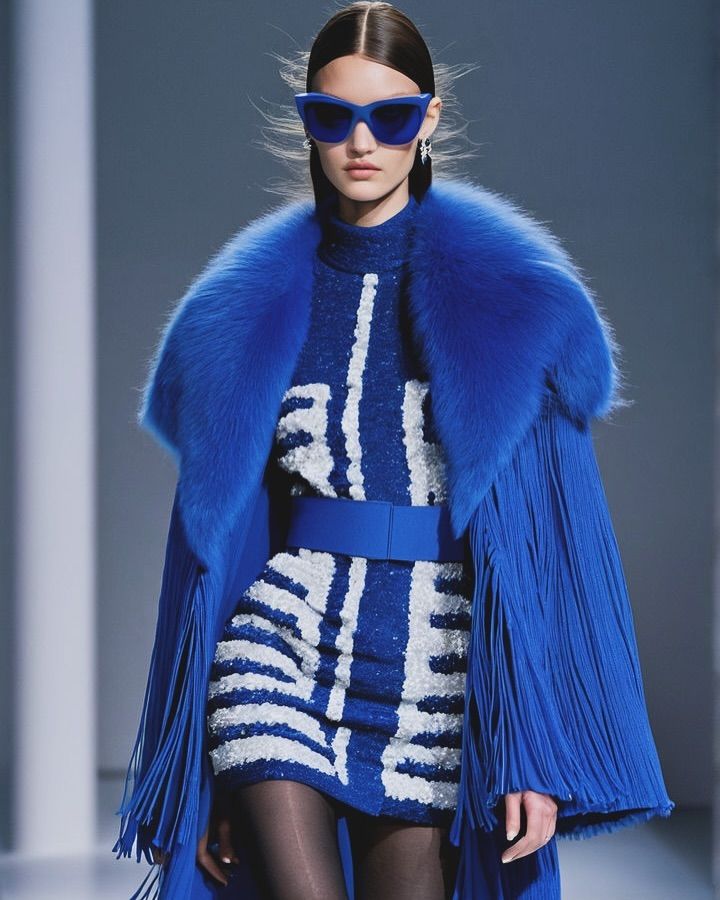The world of fashion is undergoing one of the biggest revolutions in history, driven by technology. The rise of AI and digital fashion is changing how clothes are designed, marketed, and even worn. From virtual garments to AI-powered runways, 2025 is proving that fashion is no longer limited to fabrics and stitching — it now extends into the digital realm.
What Is AI and Digital Fashion?
AI and digital fashion combine artificial intelligence, virtual reality (VR), augmented reality (AR), and 3D design to create clothing that exists in both physical and digital worlds.
- AI in fashion design: Algorithms generate patterns, predict trends, and even design entire collections.
- Digital fashion: Clothing that exists only virtually, worn in online spaces, gaming platforms, or the metaverse.
- Virtual runways: Fashion shows where avatars model clothes instead of human models.
This transformation is blurring the line between traditional style and futuristic tech.
How AI is Changing Fashion Design
Fashion houses and independent designers are using AI to:
- Predict trends: AI scans millions of images on social media to identify upcoming styles.
- Design garments: Generative AI tools create unique prints, cuts, and styles at record speed.
- Personalize fashion: AI tailors suggestions for consumers, offering clothing based on body type, lifestyle, and preferences.
For example, brands like Tommy Hilfiger and Levi’s are experimenting with AI design assistants, reducing time from sketch to production.
Digital Fashion in the Metaverse
Virtual clothing is one of the most exciting trends in AI and digital fashion. These outfits don’t physically exist — they are purchased, worn, and displayed online.
- Gaming & avatars: Gamers buy digital outfits (skins) for their avatars in Fortnite, Roblox, and other platforms.
- Luxury in the metaverse: Gucci, Prada, and Balenciaga now sell digital versions of their collections for online worlds.
- Social media flexing: People buy digital clothing to wear in Instagram or TikTok posts, with filters that overlay garments on their images.
In 2025, digital-only garments are becoming a billion-dollar industry.
Sustainability and Digital Fashion
One of the strongest arguments for AI and digital fashion is sustainability. The industry is notorious for waste and pollution, but digital innovation is helping reduce its impact:
- Virtual samples: Instead of producing hundreds of prototypes, designers can test them digitally.
- Reduced overproduction: AI predicts demand more accurately, lowering waste.
- Digital wardrobes: Consumers can experiment with styles virtually before buying physical versions.
By cutting back on unnecessary production, brands are making strides toward greener practices.
AI-Powered Shopping Experiences
Shopping is also being reshaped by AI:
- Virtual fitting rooms: Using AR, customers can “try on” clothes online before buying.
- Smart recommendations: AI recommends outfits that match your past purchases and body type.
- Chatbot stylists: Many fashion retailers now use AI-powered stylists to provide 24/7 personalized advice.
Retail giants like Zara, H&M, and Nike are investing heavily in these technologies to boost online sales.
Challenges Facing AI and Digital Fashion
Despite the excitement, the rise of AI and digital fashion also brings challenges:
- Accessibility: High costs limit digital fashion to wealthy consumers or luxury brands.
- Creativity vs. machines: Some designers worry AI-generated collections could undermine human creativity.
- Digital ownership: Who owns a digital garment — the buyer, the platform, or the brand?
- Job displacement: Traditional roles in design and retail may shrink as AI automates more tasks.
Balancing innovation with ethics will be critical in the years ahead.

What’s Next for AI and Digital Fashion?
Looking ahead, experts predict rapid growth in AI and digital fashion:
- More immersive experiences: VR fashion shows and holographic runways will become mainstream.
- Everyday AR clothing: People may soon wear AR fashion through smart glasses, changing outfits digitally without buying new clothes.
- Greater accessibility: As tech costs fall, more consumers will experiment with digital wardrobes.
- Integration with NFTs: Digital garments may come with NFT ownership certificates, blending fashion and blockchain.
The industry is entering a new era where fashion is not only about how we look in real life but also how we present ourselves online.
Conclusion
The rise of AI and digital fashion in 2025 proves that style is no longer confined to fabric. From AI-designed garments to digital-only clothing worn in the metaverse, technology is reshaping every corner of the fashion industry. While challenges remain, the opportunities for personalization, sustainability, and creativity are immense.
Fashion has always been about expression and identity — now, with AI and digital innovation, that expression extends into both the physical and digital worlds.
Source: Vogue Business | Business of Fashion


